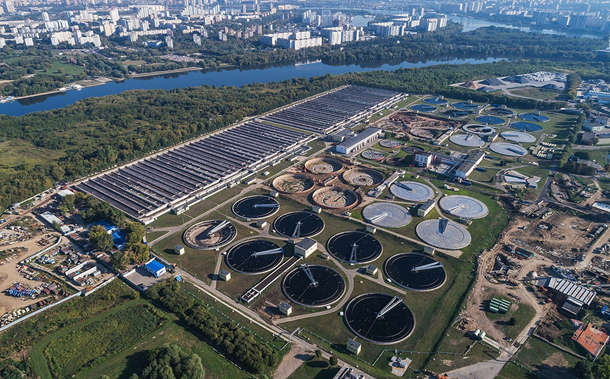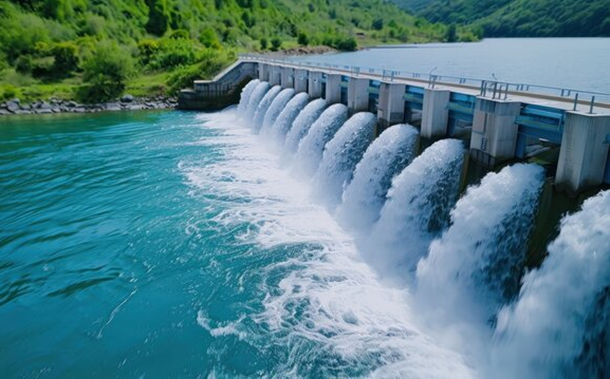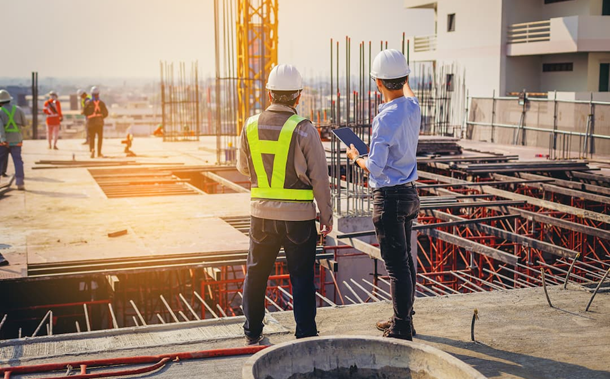The Effect of Adding Steel Fibers and Graphite on Mechanical and Electrical Behaviors of Asphalt Concrete
Downloads
Doi:10.28991/CEJ-2022-08-02-012
Full Text:PDF
Downloads
[2] Wu, S., Ye, Q., & Li, N. (2008). Investigation of rheological and fatigue properties of asphalt mixtures containing polyester fibers. Construction and Building Materials, 22(10), 2111–2115. doi:10.1016/j.conbuildmat.2007.07.018.
[3] Slebi-Acevedo, C. J., Lastra-González, P., Pascual-Muñoz, P., & Castro-Fresno, D. (2019). Mechanical performance of fibers in hot mix asphalt: A review. Construction and Building Materials, 200, 756–769. doi:10.1016/j.conbuildmat.2018.12.171.
[4] Salari, Z., Vakhshouri, B., & Nejadi, S. (2018). Analytical review of the mix design of fiber reinforced high strength self-compacting concrete. Journal of Building Engineering, 20, 264–276. doi:10.1016/j.jobe.2018.07.025.
[5] Wang, H., Yang, J., Liao, H., & Chen, X. (2016). Electrical and mechanical properties of asphalt concrete containing conductive fibers and fillers. Construction and Building Materials, 122, 184–190. doi:10.1016/j.conbuildmat.2016.06.063.
[6] Rew, Y., Baranikumar, A., Tamashausky, A. V., El-Tawil, S., & Park, P. (2017). Electrical and mechanical properties of asphaltic composites containing carbon based fillers. Construction and Building Materials, 135, 394–404. doi:10.1016/j.conbuildmat.2016.12.221.
[7] Wu, S., Pan, P., Chen, M., & Zhang, Y. (2013). Analysis of Characteristics of Electrically Conductive Asphalt Concrete Prepared by Multiplex Conductive Materials. Journal of Materials in Civil Engineering, 25(7), 871–879. doi:10.1061/(asce)mt.1943-5533.0000565.
[8] Serin, S., Morova, N., Saltan, M., & Terzi, S. (2012). Investigation of usability of steel fibers in asphalt concrete mixtures. Construction and Building Materials, 36, 238–244. doi:10.1016/j.conbuildmat.2012.04.113.
[9] Huang, B., Chen, X., & Shu, X. (2009). Effects of Electrically Conductive Additives on Laboratory-Measured Properties of Asphalt Mixtures. Journal of Materials in Civil Engineering, 21(10), 612–617. doi:10.1061/(asce)0899-1561(2009)21:10(612).
[10] García, A., Norambuena-Contreras, J., Bueno, M., & Partl, M. N. (2015). Single and multiple healing of porous and dense asphalt concrete. Journal of Intelligent Material Systems and Structures, 26(4), 425–433. doi:10.1177/1045389X14529029.
[11] García, í., Schlangen, E., van de Ven, M., & Liu, Q. (2009). Electrical conductivity of asphalt mortar containing conductive fibers and fillers. Construction and Building Materials, 23(10), 3175–3181. doi:10.1016/j.conbuildmat.2009.06.014.
[12] Wu, S., Mo, L., Shui, Z., & Chen, Z. (2005). Investigation of the conductivity of asphalt concrete containing conductive fillers. Carbon, 43(7), 1358–1363. doi:10.1016/j.carbon.2004.12.033.
[13] Slebi-Acevedo, C. J., Lastra-González, P., Pascual-Muñoz, P., & Castro-Fresno, D. (2019). Mechanical performance of fibers in hot mix asphalt: A review. Construction and Building Materials, 200, 756–769. doi:10.1016/j.conbuildmat.2018.12.171.
[14] Xiong, R., Fang, J., Xu, A., Guan, B., & Liu, Z. (2015). Laboratory investigation on the brucite fiber reinforced asphalt binder and asphalt concrete. Construction and Building Materials, 83, 44–52. doi:10.1016/j.conbuildmat.2015.02.089.
[15] Lau, C. K., Chegenizadeh, A., Htut, T. N. S., & Nikraz, H. (2020). Performance of the steel fibre reinforced rigid concrete pavement in fatigue. In Buildings (Vol. 10, Issue 10, pp. 1–18). doi:10.3390/buildings10100186.
[16] Paluri, Y., Mogili, S., Mudavath, H., & Pancharathi, R. K. (2020). A study on the influence of steel fibers on the performance of Fine Reclaimed Asphalt Pavement (FRAP) in pavement quality concrete. Materials Today: Proceedings, 32, 657–662. doi:10.1016/j.matpr.2020.03.147.
[17] Mohammed, M., Parry, T., & Grenfell, J. (J.R.A.). (2018). Influence of fibres on rheological properties and toughness of bituminous binder. Construction and Building Materials, 163, 901–911. doi:10.1016/j.conbuildmat.2017.12.146.
[18] Al-Hadidy, A. I., & Yi-qiu, T. (2009). Mechanistic approach for polypropylene-modified flexible pavements. Materials and Design, 30(4), 1133–1140. doi:10.1016/j.matdes.2008.06.021.
[19] Al-Hadidy, A. I., & Yi-qiu, T. (2009). Effect of polyethylene on life of flexible pavements. Construction and Building Materials, 23(3), 1456–1464. doi:10.1016/j.conbuildmat.2008.07.004.
[20] Mokhtari, A., & Moghadas Nejad, F. (2012). Mechanistic approach for fiber and polymer modified SMA mixtures. Construction and Building Materials, 36, 381–390. doi:10.1016/j.conbuildmat.2012.05.032.
[21] Park, P., El-Tawil, S., Park, S. Y., & Naaman, A. E. (2015). Cracking resistance of fiber reinforced asphalt concrete at -20 °c. Construction and Building Materials, 81, 47–57. doi:10.1016/j.conbuildmat.2015.02.005.
[22] Tapkin, S., Uşar, íœ., Tuncan, A., & Tuncan, M. (2009). Repeated creep behavior of polypropylene fiber-reinforced bituminous mixtures. Journal of Transportation Engineering, 135(4), 240–249. doi:10.1061/(ASCE)0733-947X(2009)135:4(240).
[23] Chen, H., Xu, Q., Chen, S., & Zhang, Z. (2009). Evaluation and design of fiber-reinforced asphalt mixtures. Materials and Design, 30(7), 2595–2603. doi:10.1016/j.matdes.2008.09.030.
[24] Xu, Q., Chen, H., & Prozzi, J. A. (2010). Performance of fiber reinforced asphalt concrete under environmental temperature and water effects. Construction and Building Materials, 24(10), 2003–2010. doi:10.1016/j.conbuildmat.2010.03.012.
[25] Wu, S. P., Mo, L. T., & Shui, Z. H. (2003). Piezoresistivity of Graphite Modified Asphalt-based Composites. Key Engineering Materials, 249, 391–396. doi:10.4028/www.scientific.net/kem.249.391.
[26] Liu, Q., Schlangen, E., Van De Ven, M., Van Bochove, G., & Van Montfort, J. (2012). Evaluation of the induction healing effect of porous asphalt concrete through four point bending fatigue test. Construction and Building Materials, 29, 403–409. doi:10.1016/j.conbuildmat.2011.10.058.
[27] García, A., Norambuena-Contreras, J., & Partl, M. N. (2014). A parametric study on the influence of steel wool fibers in dense asphalt concrete. Materials and Structures/Materiaux et Constructions, 47(9), 1559–1571. doi:10.1617/s11527-013-0135-0.
[28] González, A., Norambuena-Contreras, J., Poulikakos, L., Varela, M. J., Valderrama, J., Flisch, A., & Arraigada, M. (2020). Evaluation of Asphalt Mixtures Containing Metallic Fibers from Recycled Tires to Promote Crack-Healing. Materials, 13(24), 5731. doi:10.3390/ma13245731.
[29] Liu, L., Zhang, X., Xu, L., Zhang, H., & Liu, Z. (2021). Investigation on the piezoresistive response of carbon fiber-graphite modified asphalt mixtures. Construction and Building Materials, 301, 124140. doi:10.1016/j.conbuildmat.2021.124140.
[30] Hasan, R., Ali, A., Decarlo, C., Elshaer, M., & Mehta, Y. (2021). Laboratory Evaluation of Electrically Conductive Asphalt Mixtures for Snow and Ice Removal Applications. Transportation Research Record: Journal of the Transportation Research Board, 2675(8), 48–62. doi:10.1177/0361198121995826.
[31] Hasan, R. (2021). An evaluation of electrically conductive asphalt mixtures for electrically heated flexible pavement systems. Rowan University. Master Thesis, New Jersey, United States.
[32] Liu, X., & Wu, S. (2011). Study on the graphite and carbon fiber modified asphalt concrete. Construction and Building Materials, 25(4), 1807–1811. doi:10.1016/j.conbuildmat.2010.11.082.
[33] Liu, X., Wu, S., Li, N., & Gao, B. (2008). Self-monitoring application of asphalt concrete containing graphite and carbon fibers. Journal Wuhan University of Technology, Materials Science Edition, 23(2), 268–271. doi:10.1007/s11595-006-2268-2.
[34] Liu, X., & Wu, S. (2009). Research on the conductive asphalt concrete's piezoresistivity effect and its mechanism. Construction and Building Materials, 23(8), 2752–2756. doi:10.1016/j.conbuildmat.2009.03.006.
[35] Wu, S., Zhang, Y., & Chen, M. 2010. Research on mechanical characteristics of conductive asphalt concrete by indirect tensile test. In Fourth International Conference on Experimental Mechanics. International Society for Optics and Photonics. doi:10.1117/12.851473.
[36] Wang, Z., Dai, Q., Guo, S., Wang, R., Ye, M., & Yap, Y. K. (2017). Experimental investigation of physical properties and accelerated sunlight-healing performance of flake graphite and exfoliated graphite nanoplatelet modified asphalt materials. Construction and Building Materials, 134, 412–423. doi:10.1016/j.conbuildmat.2016.12.129.
[37] Pan, P., Wu, S., Xiao, Y., Wang, P., & Liu, X. (2014). Influence of graphite on the thermal characteristics and anti-ageing properties of asphalt binder. Construction and Building Materials, 68, 220–226. doi:10.1016/j.conbuildmat.2014.06.069.
[38] Wang, Z., Dai, Q., & Guo, S. (2018). Microwave-healing performance of modified asphalt mixtures with flake graphite and exfoliated graphite nanoplatelet. Construction and Building Materials, 187, 865–875. doi:10.1016/j.conbuildmat.2018.06.210.
[39] Park, P., Rew, Y., & Baranikumar, A. (2014). Controlling Conductivity of Asphalt Concrete with Graphite. Texas A&M Transportation Institute College Station. Report No SWUTC/14/600451–00025–1, Texas, United States.
[40] Wang, Z., Dai, Q., & Guo, S. (2017). Laboratory performance evaluation of both flake graphite and exfoliated graphite nanoplatelet modified asphalt composites. Construction and Building Materials, 149, 515–524. doi:10.1016/j.conbuildmat.2017.05.100.
[41] Liu, X., Wu, S., Ye, Q., Qiu, J., & Li, B. (2008). Properties evaluation of asphalt-based composites with graphite and mine powders. Construction and Building Materials, 22(3), 121–126. doi:10.1016/j.conbuildmat.2006.10.004.
[42] Liu, Q., Schlangen, E., & Van De Ven, M. (2012). Induction healing of porous asphalt. Transportation Research Record, 2305(2305), 95–101. doi:10.3141/2305-10.
[43] García, A., Bueno, M., Norambuena-Contreras, J., & Partl, M. N. (2013). Induction healing of dense asphalt concrete. Construction and Building Materials, 49, 1–7. doi:10.1016/j.conbuildmat.2013.07.105.
[44] Menozzi, A., Garcia, A., Partl, M. N., Tebaldi, G., & Schuetz, P. (2015). Induction healing of fatigue damage in asphalt test samples. Construction and Building Materials, 74, 162–168. doi:10.1016/j.conbuildmat.2014.10.034.
[45] Pérez-Jiménez, F., Valdés, G., Miró, R., Martínez, A., & Botella, R. (2010). Fénix test: development of a new test procedure for evaluating cracking resistance in bituminous mixtures. Transportation research record, 2181(1), 36-43. doi:10.3141/2181-05.
[46] Liu, Q., Schlangen, E., García, í., & van de Ven, M. (2010). Induction heating of electrically conductive porous asphalt concrete. Construction and Building Materials, 24(7), 1207–1213. doi:10.1016/j.conbuildmat.2009.12.019.
[47] Eisa, M. S., Mohamady, A., Basiouny, M. E., Abdulhamid, A., & Kim, J. R. (2021). Laboratory evaluation of mechanical properties of modified asphalt and mixture using graphene platelets (GNPS). Materials, 14(19), 5599. doi:10.3390/ma14195599.
- Authors retain all copyrights. It is noticeable that authors will not be forced to sign any copyright transfer agreements.
- This work (including HTML and PDF Files) is licensed under a Creative Commons Attribution 4.0 International License.![]()














